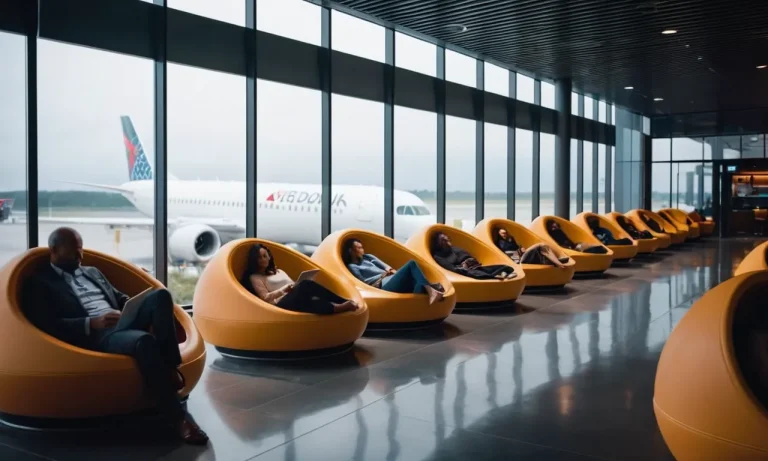Roles Of Female Flight Attendants
Female flight attendants, also known as stewardesses or cabin crew members, play a vital role in air travel operations and passenger safety. They undertake a wide range of in-flight service responsibilities focused on care and hospitality.
History and Evolution of the Flight Attendant Role
The role of flight attendants has a rich history that dates back to the early days of aviation. Over the years, this role has evolved and adapted to the changing needs and demands of the aviation industry.
Understanding the history and evolution of the flight attendant role provides valuable insights into the important contributions made by female flight attendants.
Early In-Flight Service Roles for Women
In the early days of commercial aviation, flight attendants were primarily hired for their physical appearance and charm. These women were often referred to as “sky girls” or “air hostesses”. Their primary responsibilities included serving meals, assisting passengers, and ensuring their comfort and safety during the flight.
These early flight attendants were seen as glamorous and sophisticated, embodying the spirit of air travel.
During World War II, the role of flight attendants took on a more crucial role. Women played a vital role in transporting military personnel and equipment, serving as flight nurses and providing medical assistance during flights.
Their bravery and dedication in the face of danger earned them the respect and admiration of many.
Regulations and Requirements Over Time
As aviation regulations and safety standards became more stringent, the requirements for flight attendants also evolved. Airlines started to establish specific guidelines regarding age, height, weight, and physical fitness.
These requirements were in place to ensure that flight attendants could effectively carry out their duties, including emergency procedures and evacuation protocols.
In the 1960s, airlines began to introduce diversity and equal opportunity initiatives, opening up opportunities for women of different backgrounds to become flight attendants. This shift helped to break down gender barriers and paved the way for more women to enter the aviation industry.
Changing Responsibilities and Training
With advancements in technology and changes in passenger expectations, the responsibilities of flight attendants have expanded beyond just providing in-flight service. Today, flight attendants are highly trained professionals who play a crucial role in ensuring the safety and well-being of passengers.
Flight attendants undergo rigorous training programs that cover a wide range of topics, including emergency procedures, first aid, conflict resolution, and customer service. They are trained to handle various situations, such as medical emergencies, security threats, and turbulence, with calmness and efficiency.
Additionally, flight attendants serve as ambassadors for their respective airlines, representing their brand and providing exceptional customer service. They are responsible for maintaining a welcoming and friendly atmosphere onboard, ensuring that passengers have a positive and comfortable travel experience.
Common Duties and Day-to-Day Tasks
Female flight attendants play a crucial role in ensuring the safety and comfort of passengers during flights. They are responsible for a wide range of tasks that contribute to the overall smooth operation of the flight.
Let’s explore some of the common duties and day-to-day tasks performed by these dedicated professionals.
Safety and Emergency Procedures
One of the primary responsibilities of female flight attendants is to ensure the safety of passengers in the event of an emergency. They undergo rigorous training to become proficient in handling various emergency situations, including evacuations, medical emergencies, and security threats.
Flight attendants are trained to remain calm and composed while guiding passengers through safety procedures such as fastening seatbelts, using oxygen masks, and locating emergency exits. Their quick thinking and ability to react swiftly can make a significant difference in ensuring the well-being of everyone on board.
Providing In-Flight Services
Another important aspect of a flight attendant’s role is to provide excellent customer service and attend to the needs of passengers. They are responsible for welcoming passengers onboard, assisting with seating arrangements, and ensuring that everyone is comfortable throughout the flight.
Female flight attendants often serve meals and beverages, answering questions, and attending to special requests. They create a welcoming and pleasant atmosphere for passengers, ensuring a positive experience during the flight.
Administrative Tasks and Irregular Operations
Flight attendants also handle various administrative tasks to ensure the smooth operation of the flight. They are responsible for conducting pre-flight checks, including inspecting emergency equipment and ensuring that all necessary supplies are on board.
Additionally, flight attendants liaise with the flight crew, coordinating with them on important matters such as weather updates, turbulence, and flight delays. In the event of irregular operations, such as flight diversions or cancellations, flight attendants play a crucial role in assisting passengers and providing necessary information and support.
It is important to note that the specific duties and tasks of female flight attendants may vary depending on the airline and the type of flight they are working on. However, their commitment to passenger safety, exceptional customer service, and their ability to handle various situations with professionalism and grace are traits that are universally valued in this profession.
Evolving Responsibilities in a Modern Context
Female flight attendants play a crucial role in ensuring the smooth operation of flights and the safety and comfort of passengers. Over the years, their responsibilities have evolved to meet the changing needs of the airline industry and the expectations of passengers.
Let’s explore some of the key roles and responsibilities that female flight attendants have in a modern context.
Passenger and Crew Welfare
One of the primary responsibilities of female flight attendants is to ensure the welfare of both passengers and the crew. They are trained to handle various situations that may arise during a flight, including medical emergencies, turbulence, and unruly passengers.
Their presence and quick response can help alleviate any concerns and create a safe and calm environment for everyone on board.
Female flight attendants are also responsible for providing excellent customer service. They assist passengers with their needs, such as providing information, serving meals and beverages, and attending to special requests.
Their friendly and professional demeanor helps to create a positive experience for passengers and contributes to the overall reputation of the airline.
Heightened Security Procedures
In today’s world, female flight attendants have an important role in ensuring the security of flights. They are trained in security procedures and are vigilant in identifying any potential threats or suspicious activities on board.
They work closely with the cabin crew and the flight deck to maintain a secure environment throughout the flight.
Female flight attendants are also responsible for conducting pre-flight security checks, including inspecting the cabin for any prohibited items or potential safety hazards. Their attention to detail and adherence to security protocols help to ensure the safety of everyone on board.
Ongoing Training and Development
To stay updated with the latest industry standards and regulations, female flight attendants undergo regular training and development programs. These programs cover a wide range of topics, including safety procedures, medical emergencies, customer service, and cultural sensitivity.
Continuous training allows female flight attendants to enhance their skills and knowledge, enabling them to provide a higher level of service to passengers. It also equips them with the necessary skills to handle challenging situations effectively.
Conclusion
While roles have changed, female flight attendants remain indispensable airline crew members. Their skills and dedication contribute greatly towards comfortable, safe flights.








